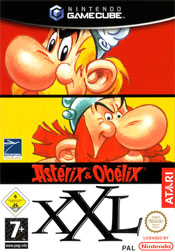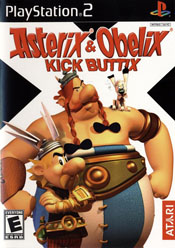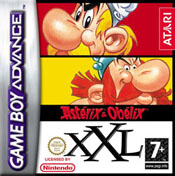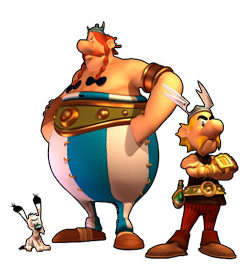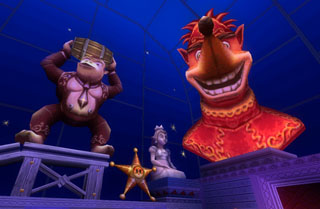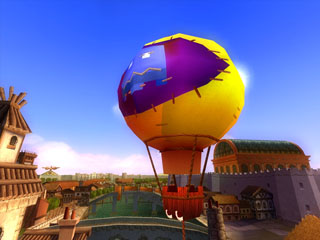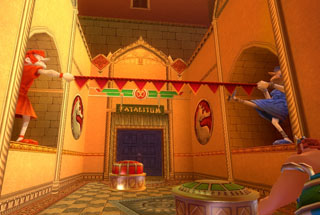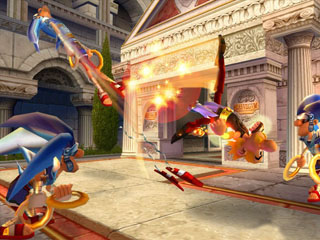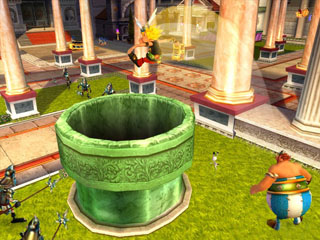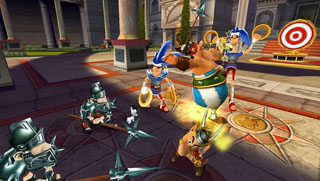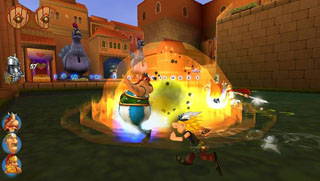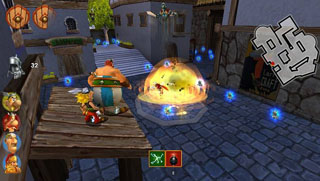
|
Page 1: |
Page 2: |
Page 3: |
Page 4: |
Page 5: |
|
Page 6: |
Page 7: |
Page 8: |
Infogrames becomes Atari Interactive
Though Astérix had seen a successful mainstream relaunch through the release of the live action movie and coupled with a few above average video games, it would take a few years after the release of Maxi-Delerium for Infogrames to continue to ride the wave of the re-ignited popularity. Infogrames was in the midst of making changes, and to fully make sense of all these changes, one has to go back to 1996. Bruno Bonnell, one of the founders, made the decision to make Infogrames the biggest video game publisher in the world. What followed was a series of acquisitions in a pace and number never seen before. From 1996 to 2001, the following studios and publishers were acquired: Ocean Software, Philips Media BV, OziSoft, ABS Multimedia, Arcadia, Swiss Gamecity GmbH, Gremlin Interactive, Accolade, Beam Software, GT Interactive, Humongous Entertainment, Legend Entertainment, Reflections Interactive, Paradigm Entertainment, Den-o-Tech Int, Hasbro Interactive, Eden Games, Shiny Entertainment
The total price for this seven year long takeover series amounted to a total over $500 million. So intense was the spending that in the time between 1999 to 2001, the company's debt was raised from $55 million to $493 million though through the amount of releases they were now able to make, their profit also saw a raise from $246 million to $650 million during the same timeframe.
It was the acquisition of Hasbro Interactive that would prove to have the most impact on the company. Along with Hasbro's rights to Dungeons and Dragons, Mr. Potato Head, My Little Pony and the Game.com hardware, Infogrames also held the rights to a legendary name in video game history, Atari Inc.. In 2001, Bruno Bonnell decided to reorganize the entire company operation and rename all studios to use the name Atari. Infogrames Interactive. became Atari Interactive, Infogrames Australia became Atari Australia, Infogrames Melbourne House became Atari Melbourne House and Infogrames UK became Atari UK.
This relaunch would have a strikingly negative impact on the longtime French publisher and developer. Despite the initial financial boost, things quickly cooled down and their debt would become an issue leading to a number of sales to make ends meet. By 2006, the company could report a loss of $500 million since 1999. This would all lead to Bruno Bonnell leaving the company in 2007 after serving as chairman since 1983.
However, not all was doom and gloom during this time of acquisitions and loss of Roman proportions. In 2004, Astérix finally returned in an all new multiplatform adventure after a 3 year hiatus.
Astérix & Obélix XXL / Astérix & Obélix Kick Buttix - GameCube, Game Boy Advance, PlayStation 2, Windows (2004)
Étranges Libellules was a rather unproven developer from France who's only prior title was 2001's video game adaptation of Kirikou, a renowned French animated movie based on African folk tales. While the game didn't exactly turn the world upside down, they were nevertheless trusted with handling the biggest French property, Astérix. The result was an all new exclusive adventure for near all major systems at the time, with the exception of Xbox.
While out in the forest hunting for wild boars, the skies turn dark and alert Astérix that something foul is afoot. Upon returning to the village he finds his home torched in flames and his fellow villages are nowhere to be found. As he runs down the trail to investigate, he is greeted by a mysterious man who shares information of what has just happened. It turns out this man is a defected Roman spy who decided to go against César once his services were no longer needed. While Astérix and Obélix were out hunting, the village was struck by Roman soldiers led by César himself and ordered the captured Gauls to be sent to different locations around the world. The map showing these locations is broken apart but the captured Gauls managed to snag a piece each before being taken away. Panoramix the druid is locked up right outside the village and after rescuing him, Astérix and Obélix receive the first piece of the map and begin their journey to save all the other Gauls scattered around the Roman Empire.
In contrast of the comic books and cartoons, this game features darker overtones than what you would usually expect from Astérix, with a general grim color scheme being used throughout the game. The characters are also a tad bit more sinister than what you would regularly expect from the famous series. Even our heroes have undergone some changes, being given the American Kirby treatment.
While Astérix retains his usual quick wits, there are some changes made to the characterizations. Obélix appears much less bumbling and both heroes have a strikingly more aggressive nature to them through the cutscenes. In the context of the story it does make sense seeing that their friends have not only been kidnapped but their home burned to the ground, but it's still a quite different take presented here aimed at the new and younger audience, who have now grown up with more shades of gray to their heroes. The Romans come off as more sinister than before, especially César himself, and the machinery used by them is also quite brutal in their appearance, with blades and firepower unlike that found in the albums and movies.
The goal is to travel the Roman Empire and rescue all the villagers from captivity. Players take control of either Astérix or Obélix through large 3D levels riddled with puzzles, Roman squadrons, environmental hazards and mazes. The players switch control of the duo during certain points in the stages, or if Astérix is stuck in a certain situation, though the default character is Astérix. The majority of bosses and puzzles rely on this co-op style of gameplay and often the key to progress to the next area. This can be everything from Obélix pushing large machinery to Astérix sliding down the snowy mountains in what might possibly be the most suggestive scene in video game history. A lot of the puzzles also revolve around Astérix using torches to light fires, much like one does in the dungeons of the Zelda games. While fighting Romans, the other character is controlled by the CPU and you can command him to attack the nearest enemy by pushing the assigned button. Idéfix also joins in the battles and can be used to stun enemies carrying weapons or shields by pushing his assigned button as well, similar to what is found in Sega's Shadow Dancer. There are small differences between the two playable characters - Astérix can pick up magic potions and be invincible for a few seconds while Obélix has greater defense and constant super strength. Astérix must have a potion in order to break iron crates, something Obélix does not. Despite the reliance on co-op gameplay, the game only allows for a single player.
Within this fighting system lies a very detailed combo system. The gauge on the right side of the HUD is the combo meter, which fills itself up by you rapidly beating Romans left and right. Once this meter is filled up it displays the word COMBO and allows you to input a command to unleash a super attack for some devastating melee action. A number of combo moves can be bought by visiting the Pedlar found across the different stages.
The stages are filled with secrets scattered around. Each area has a specified amount of laurels which can be collected to unlock a new costume, one per section. You'll also find trails of Roman helmets and multipliers which is used as currency. After saving up enough helmets, you can either visit the Pedlar to buy some new combos and upgrades or unlock pictures in the gallery section on the map. There are a total of 40 stages, with them being often long trenches of 4-5 stages connected by checkpoints, ultimately making it a rather large game. In order to save, you need to find the sleeping druid and slap him silly in order to wake him up and save your progress.
Perhaps this is what hurts the game the most in the end as well. Apart from the first stage, set in the Gaul forest and village which looks quite nice with good detail to make the village look authentic and the forest having some nice textures, the rest of the game looks awfully bland if not completely unimaginative. Once you reach the second section of the map, Normandy, the level design and overall looks become very one dimensional. Large fields of plain white, white blue or caves of darker blue textures fills the screen but fails to create any diversity. The level design also feels restricted in a way more fitting of a N64 or PSX game, with huge barriers restraining you into a too linear play field mixed with a few open fields that allows for battles with enemies. The game simply tries to be bigger than it is and ends up exposing its own weaknesses almost pervertedly.
The combo system also falls short quite quickly. While initially it seems to be a rather robust series of moves and a fun addition to the brawling, you forget about them as soon as you buy them with the button combinations being confusing in the heat of the battle and worse yet, when actually performed they seem largely ineffective compared to just grabbing and smacking Romans around with your standard moves. It would have been better if it was simply a 2-button system that you would have to push simultaneously in order to activate but when surrounded by supposedly 70 Romans, it's better to just whack them the way you know already. The use of Obélix and Idéfix during heated battles does help to keep some of these fights interesting, and saves the fighting portion from being a completely brain dead affair. Boss battles often requires you to use abilities of both heroes together in order to beat some kind of Roman machinery.
The graphics in this game are also quite a mixed bag, ranging from completely outdated architecture to inaccurate animations. Using a full 3D look to the locations and characters, the cast looks for the most part quite good and instantly recognizable, with lots of attention given to the way they move, so that everyone looks and feels different to the eye. During fights, Romans will be catapulted across screen from the power of your chops and fly into the skies once you've completely taken care of them, which gives the game some favorable points for being true to its source. It's really the levels themselves that graphically suffer with too many flat shapes with dull color schemes and little variation, not to mention that they just feel so dead and lifeless, with only the occasional Roman spy or legions to encounter. Even though released in 2004, it's as if the game was first developed with an earlier system in mind and was simply ported over to better hardware with slight graphical enhancements.
The sound department is also ill fitting both in melody and dialogue. The music is driving electronica with some sampled traditional instruments spliced in, but sounds at times like it was lifted from an entirely different game. There are also long sections where no music at all appears, usually during puzzle solving, which definitely could have needed an extra melodic boost. The soundtrack was handled by LaForest, the artist name of Fabrice Bouillon who would compose the music for the majority of games developed by étranges Libellules. The voice acting is by far the worst part of the sound approach to this game. Initially it seems promising as the Roman Spy is reasonably well cast, but everyone else are portrayed with the thickest British accent along with some ridiculously overacting. There isn't a lot of dialogue throughout the game given its large size, but it certainly will get on your nerves if you have to hear it over again on further replays.
Four versions were produced of this game. The lead system seems to have been Nintendo's Gamecube, running more smoothly than the other versions and offering the best button layout out of all of them. The PS2 version suffers from some occasional slowdowns during bigger boss fights and when a large amount of characters are on screen, but is largely the same as the Gamecube version. The Windows port allows for higher resolution and better graphical settings, but is filled with game breaking bugs. Another interesting fact about the Windows port is that all the unlockable pictures can be accessed on the game CD itself in the gallery folder, rendering the in game need to unlock them completely unnecessary. Astérix & Obélix XXL was one of the rare titles that got a US release, though only for the PlayStation 2 version and under the name Astérix & Obélix: Kick Buttix. It is unchanged from the PAL release apart from the cover artwork, which followed the long standing tradition of having awful box art for the North American market.
The Game Boy Advance game tells the story of XXL in a very condensed form and is a full 3D adventure for the portable system. As impressive as this sounds, the results is what I can only imagine to be what Jim Power would have been if it was made into a 3D action platformer. It is technically impressive, being a fully 3D textured adventure with multi angled 2D sprites which in theory makes it look somewhat like a PSX game. It's just very hard for the eyes to be focusing on so much zooming and scaling on such a small dim screen, and will create some serious headaches over longer periods of time. A lot of the sprites also come off looking awfully jumbled and unintelligible causing the game to be more frustrating than what it really should be. This version was handled by Velez & Dubail, a developer that had earlier impressed with their graphics on other handheld titles such as V-Rally 3 on GBA and Wacky Races on the GBC.
For fans, XXL proves to be a fresh enough take on the franchise and decent enough of a game to entertain throughout one play through. It was received to a mixed reception by critics but still enjoyed favorable sales throughout the continent and brought Astérix back to a relevant place the game shelves in stores. It certainly doesn't do anything new with the genre, but manages to keep its head barely above water so it doesn't completely drown in the library of platformers. Still, one can't shake off the feeling that it just feels a bit old around the corners and is severely hurt by the lack of a two player mode.
Quick Info:
|
Developer: |
|
|
Publisher: |
|
|
Director: |
|
|
Genre: |
|
|
Themes: |
Astérix & Obélix XXL (Windows)
Astérix & Obélix XXL (Windows)
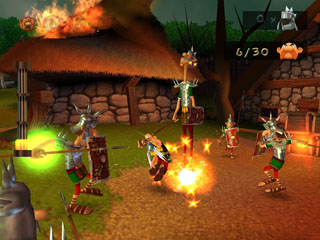
Astérix & Obélix XXL (Windows)
Astérix & Obélix XXL (Windows)
Astérix & Obélix XXL (Windows)
Astérix & Obélix XXL (Windows)
Astérix & Obélix XXL (Windows)
Additional Screenshots
Unlockable Costumes
Game Boy Advance Screens
Astérix & Obélix XXL 2: Mission: Las Vegum - PlayStation 2 / Windows (2005)
Astérix & Obélix XXL 2: Mission: Ouifix - Nintendo DS / PlayStation Portable
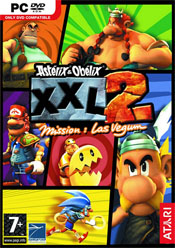
PSX Cover
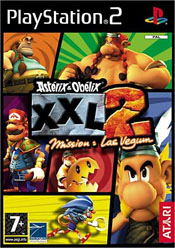
PC Cover
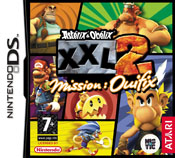
DS Cover
Even though there was quite a mixed reaction over XXL, most critics and fans agreed that this style of game had potential. Open area brawlers had always been what suited Astérix the most and with the ground work having been laid down in XXL the year before, étranges Libellules were back once again with a promise of bigger battles and greater adventures. Though the memorable faces would not be limited to the universe created by Goscinny and Uderzo this time around.
Panoramix the druid calls in the other druid chiefs to a meeting to speak about the new threat that the Romans pose to Gaul with the invention of new kind of super soldier. The other druids show little fear when hearing of these plans and ask Panoramix why he would be so concerned over the Roman's upcoming plan since they have never been successful in the past. The reason is simple - Panoramix is the mastermind behind the new plans. The Romans take the druids captive with the help of the traitor and César himself orders them sent away and thanks Panoramix for his help. When word reaches the Gaul village of what has happened, the village chief Abraracourcix is shocked at the reveal of Panoramix's betrayal. But Astérix is not convinced the druid would simply switch sides and help the Romans. As Astérix and Abraracourcix argue, the mysterious defected Roman spy Sam Shieffer appears to alert the Gauls of the Roman's plans. He reveals the the captured druids are held in Las Vegum, a resort filled with games and activities built on César's orders. While Shieffer can't answer why Panoramix has changed allegiance, he tells the heroes that Las Vegum will be the place to find all the answers they need. Astérix, Obélix and Idéfix sets off once more to take on the Romans and save the druids, and most importantly find out what has happened to Panoramix.
When released, the game marketed itself as the world's first video game parody, featuring characters and locations directly inspired by other video game greats. Few seconds will pass before you see familiar things that catches your attention, from names to likenesses. Even the box art uses inspiration from GTA.
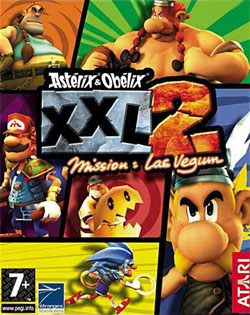
Astérix & Obélix XXL 2: Mission: Las Vegum
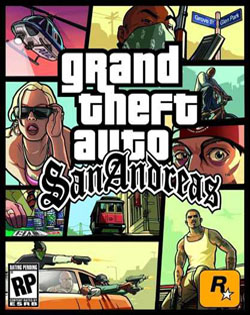
Grand Theft Auto: San Andreas
The game world is filled with references left and right scattered all over in different ways. You find places named things such as the Fatalitum, meet characters named Larry Craft and jump on star themed pinball bumpers to reach higher places. Every turn is filled with some kind of reference to virtually any kind of game from Space Invaders to Super Mario Sunshine. Las Vegum is an huge open hub world where the player wanders around and areas are split into 6 sections: Lutetia, WCW, LuckSore, Little Venetia, Pirate Island, and SeizeUs Palace. Each of these sections contain multiple areas within that creates some truly huge levels with intricate puzzles and massive battles. It's not just video game references that can be found within the game, but also several movies and even sports.
Like XXL, this sequel also has a heavy emphasis on co-op, though this feature was given a severe boost in accessibility. Unlike the first game where swapping was decided by the CPU or done by entering a swap field found on certain locations, XXL2 allows the player to hot tag at any given moment. The puzzles found in XXL2 are modeled to work with the individual characters attributes. Astérix is small, fast and can reach through tight spaces, jump onto higher ledges and use magic potions to plow through legions. Obélix has his signature strength, but can also be shot out of cannons and lift big boulders as well as break iron doors. The rope-pulled air carts make their return though with simplified controls for more enjoyable results. The control scheme overall has been simplified by relying less on combos and rather adding new standard attacks. Now you can use a secondary attack that stuns enemies, allowing you to grab them or position yourself better in the fights. The battles you encounter are much better paced and executed, usually being against 60-70 opponents at once coming in waves. Winning these fights are essential as they unlock doors and areas. There is a new reward system found in the game that allows the player to win prizes by performing the onscreen command on the enemy that has the flashing gift icon. Unlike the first game where the combos had to be purchased, the are simply gained after each boss fight in XXL2.
The enemies are also much more varied than those found in XXL. It was maybe this aspect of the game that gave it the most attention when it was released. In addition to the standard ensemble of Roman soldiers, legionnaires and Egyptian saber wielders, the game also boosts a cast of various foes disguised in garb which looks awfully similar to those of famous video game characters. There are Italian men in red and blue squirting you with water, blue spiked helmet guards using golden rings as weapon, even a dark haired martial artist who sends out wave motion projectiles and even fly off screen in slow motion. Almost every area will reveal their own kind of video game themed enemy that you will start encountering throughout the game. It's an interesting contrast to see the heroes of all the video games we remember being parodied into being enemies in this game.
The locations are now much more layered and interesting with less reliance on open empty areas to fight, which allows for some old school puzzle exploration. Though XXL was a rather large game, XXL2 puts it to shame with a fully connected world through the Las Vegum hub and features little loading, being often masked by accessing a underground metro system that connects the areas and loads the new area while waiting for the lift. The puzzles still rely often on lighting torches, though now simply by punching the lantern instead of running around with a burning torch before it extinguishes. The air cart also returns with some simplified controls and also operating on its own, allowing Astérix to do some rotations to avoid ledges, walls or fetch items along the cord it runs on. There are also the new bomb puzzles where one of the heroes has to push a bomb across narrow passages or tight spaces with the danger being if it even so slightly touches a single wall or object, it will explode. With the push system controls and some clever level design, these puzzles give some great laughs. The bombs will look awfully familiar when you first see that they have cutesy face on them, very similar to another bomb oriented video game hero. The destructible walls also look quite familiar.
With so much going on on the play field, it's quite easy to forget the storyline despite being unique compared to the many cookie cutter Astérix games out there. The story plays out through cut scenes, which still suffers from some voice acting issues, though it is much better than the first game. The two major setbacks are the camera and the boss fights. The camera doesn't do a good job centering itself properly around the protagonist and especially during the sensitive guiding of the bombs, it's extremely frustrating that going through a corridor or door will lead the camera to go loony and make it hard to see where exactly you're going. The boss fights are just a waste of potential for the most part, and are incredibly uninspired. Astérix and Obélix must fight the mutated super soldiers by stunning them and knocking out their emblems mounted on their chests. The initial fights are rather interesting by using some good co-op moves to pull it off, it's just that this is the only kind of boss you will meet, with very little variation. Even the last boss of the game is the exact same with very little addition to the showdown except a few color changes. With the video game parody thing the game has going, the boss fights had some great potential to make use of that, but instead what you get is something very uninspired.
XXL2 is full of easter eggs, secrets and unlockables. In each area, there are secret souvenir shops that can be found which will unlock different galleries and other secrets in the Souvenir menu. There are also 30 diamond helmets to be found, often hidden in secret rooms or outside of camera reach. These helmets unlock character galleries which allow you to go and look at the in-game models of each character found. You can also find casino machines all over the place which, at the price of a few helmets, will roll and give you a random item, providing that you win.
Reception for the game was again somewhat of a mixed bag, though not specifically for the game mechanics. It seems that the parody aspect of the game gave it attention beyond what was maybe expected and so many gamers, many of which were from countries without general knowledge of Astérix thought the game to be some kind of cheap knock off, using all these familiar faces as a selling card, but were confused to find a game that focuses on its own characters which most had no previous connection to. Fans of the franchise were mixed in that they felt the game lacked most of the common Astérix set pieces and seemed like a far fetched idea and an excuse to use the license, but if you look a bit deeper into what étranges Libellules you'd find that they actually used everything that Astérix would do in the albums and cartoons, but applied to the world of video games. Satire, humor, mystery and action is all found in this game and done in a way that makes for a very wholesome gaming experience. The only real shame is how secondary the story is when it actually had the potential to be a very interesting one. The music remains a bit out of place just like in XXL but since the locations are so ever changing, it doesn't stick out as much. There are still moments of complete silence that feel very awkward however. The music was once again composed by LaForest.
A year after the initial release, a PSP and DS port was released under the name Astérix & Obélix XXL 2: Mission Ouifix (Wifix in English). The PSP version is essentially a graphically downgraded port of the PS2 version with the same soundtrack and voice acting being ported over. The new addition is the wireless co-op mode which lets a player tag up for some Roman bashing melee, a much appreciated addition that makes the PSP port worth the double dip. Also included is a new deathmatch mode, pitting characters against each other in an arena inspired by either Las Vegum or the Astérix universe and makes use of new weapons that can be picked up along with the standard hand to hand mechanics. This port was handled by étranges Libellules.
The DS port is quite different from the PS2 and PSP game. This version is a 3D beat em up played on a fixed 2D plane, making Astérix or Obélix always follow a linear path rather than the open hub found in the other games. The bottom screen shows all your stats, and tapping the picture of the secondary character does the swap. Most the puzzles have been either dumb down or modified to allow them to work on the 2D layout, and the air carts are now done by using the stylus and guiding it on a map that appears without touching the walls. It's a pretty unremarkable port and quite clunky to play. The graphics are pretty jagged and suffers from quite a lack of detail due to the small screens. It does however allow for single cart multiplayer and has the deathmatch mode included.
Quick Info:
|
Developer: |
|
|
Publisher: |
|
|
Director: |
|
|
Genre: |
|
|
Themes: |
Astérix & Obélix XXL 2: Mission: Las Vegum (Windows)
Astérix & Obélix XXL 2: Mission: Las Vegum (Windows)
Astérix & Obélix XXL 2: Mission: Las Vegum (Windows)
Astérix & Obélix XXL 2: Mission: Las Vegum (Windows)
Astérix & Obélix XXL 2: Mission: Las Vegum (Windows)
Astérix & Obélix XXL 2: Mission: Las Vegum (Windows)
Astérix & Obélix XXL 2: Mission: Las Vegum (Windows)
Astérix & Obélix XXL 2: Mission: Las Vegum (Windows)
Astérix & Obélix XXL 2: Mission: Las Vegum (Windows)
Astérix & Obélix XXL 2: Mission: Las Vegum (PS2)
Astérix & Obélix XXL 2: Mission: Las Vegum (PS2)
Handheld Versions
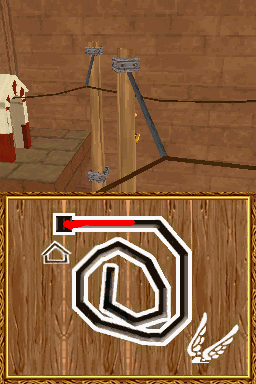
Nintendo DS
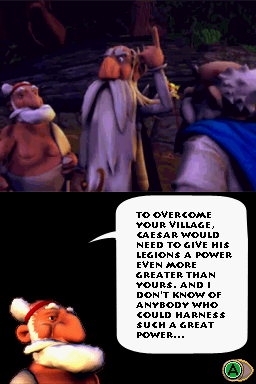
Nintendo DS

Nintendo DS
Game Parodies

Sam Fisher
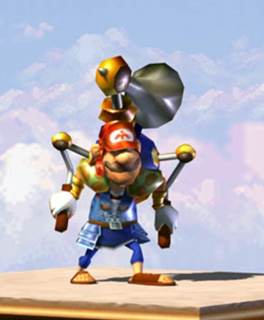
Mario
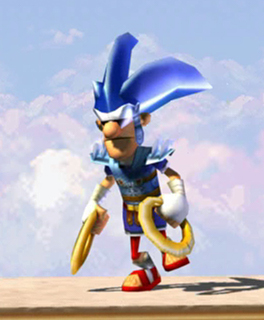
Sonic
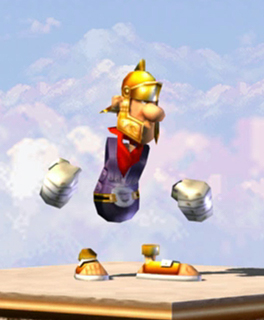
Rayman
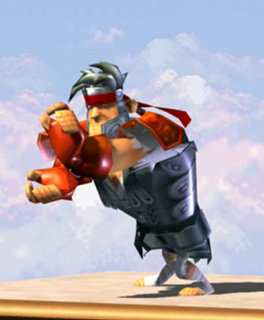
Ryu
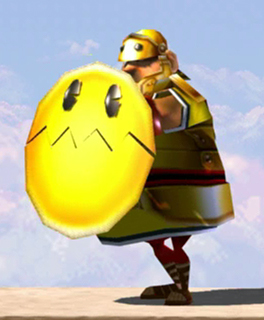
Pac-Man

Listing Cover
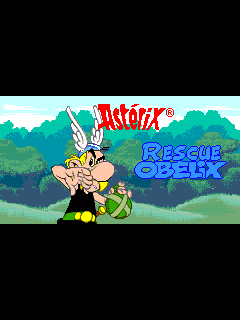
Title Screen
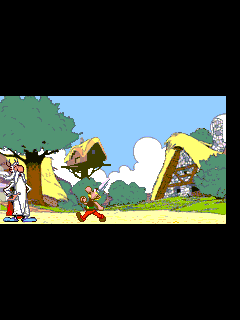
Astérix: Sauver Obélix (Mobile)
Cell phone games have been big business since the days when phones came packaged with the classic Snake, catching the pixel dot as it grew longer per bite. As technology and space became better with the advent of the camera phones, these devices started making use of the Java programming language which allowed for somewhat impressive graphics in a relatively small compressed file. These were the days before the iPhone introduced their App Store, so games were often downloaded using WAP (Wireless Application Protocol) with text codes often being featured in tabloid magazines. In 2005, In Fusio released Astérix: Rescue Obélix.
Obélix has managed to do the one thing he was told to never do - he has taken a sip of the magic potion. This has resulted in him turning into a solid rock, the known side effect after falling into the cauldron as a child. Due to Obélix being stoned quite literally, the Romans have managed to capture him and hold him captive at the camp. Panoramix asks Astérix to save his lifelong friend, and off he goes.
The game is a simple platformer using the graphics from Astérix & Obélix on the SNES and goes through the Gaulish forests, bashing Romans and picking up treasures. Across the levels you will find gold coins, Roman helmets and coin bags. Picking up all these will give you a 1-up at the end of the level which is reached when you find Idéfix. Hearts can be picked up for energy refills and Astérix heads for 1-ups. There are also bottles of magic potions around that will make you invincible.
Being a cell phone game, there's not much to find. There are only seven levels, all which are about a minute in length and the controls are very stiff and restricted due to being controlled by a numerical pad, which can be quite small depending on the size of the phone itself. The graphics are quite colorful and surprisingly detailed, looking much like they did on the SNES though with less animation. Being only five minutes in total length, it's probably not worth the money through the cell phone services, and too short and uneventful for fans to truly care in the end.
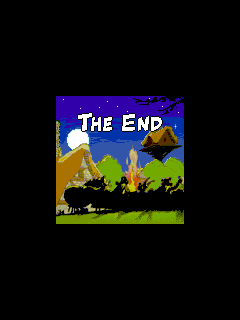
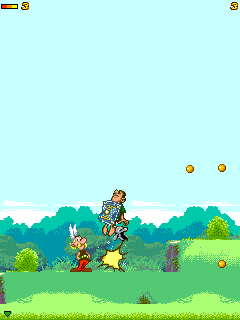
Astérix: Sauver Obélix (Mobile)
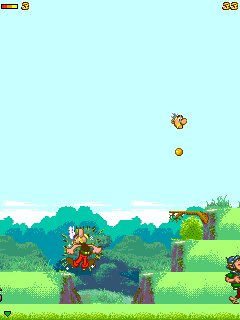
Astérix: Sauver Obélix (Mobile)
|
Page 1: |
Page 2: |
Page 3: |
Page 4: |
Page 5: |
|
Page 6: |
Page 7: |
Page 8: |


